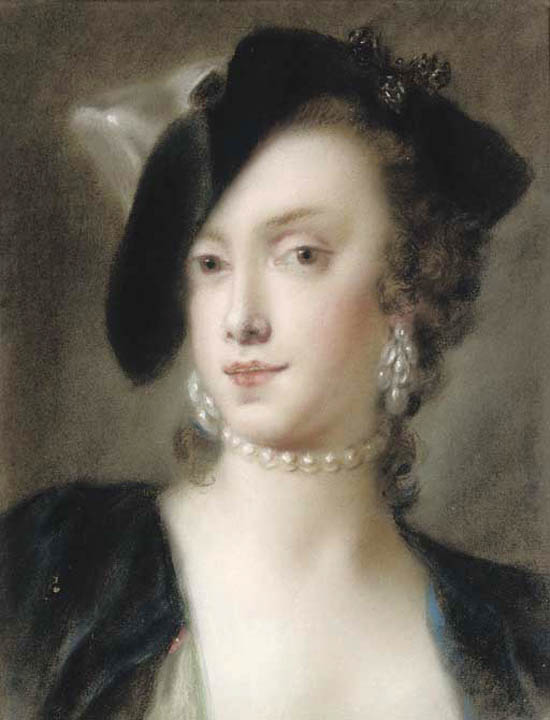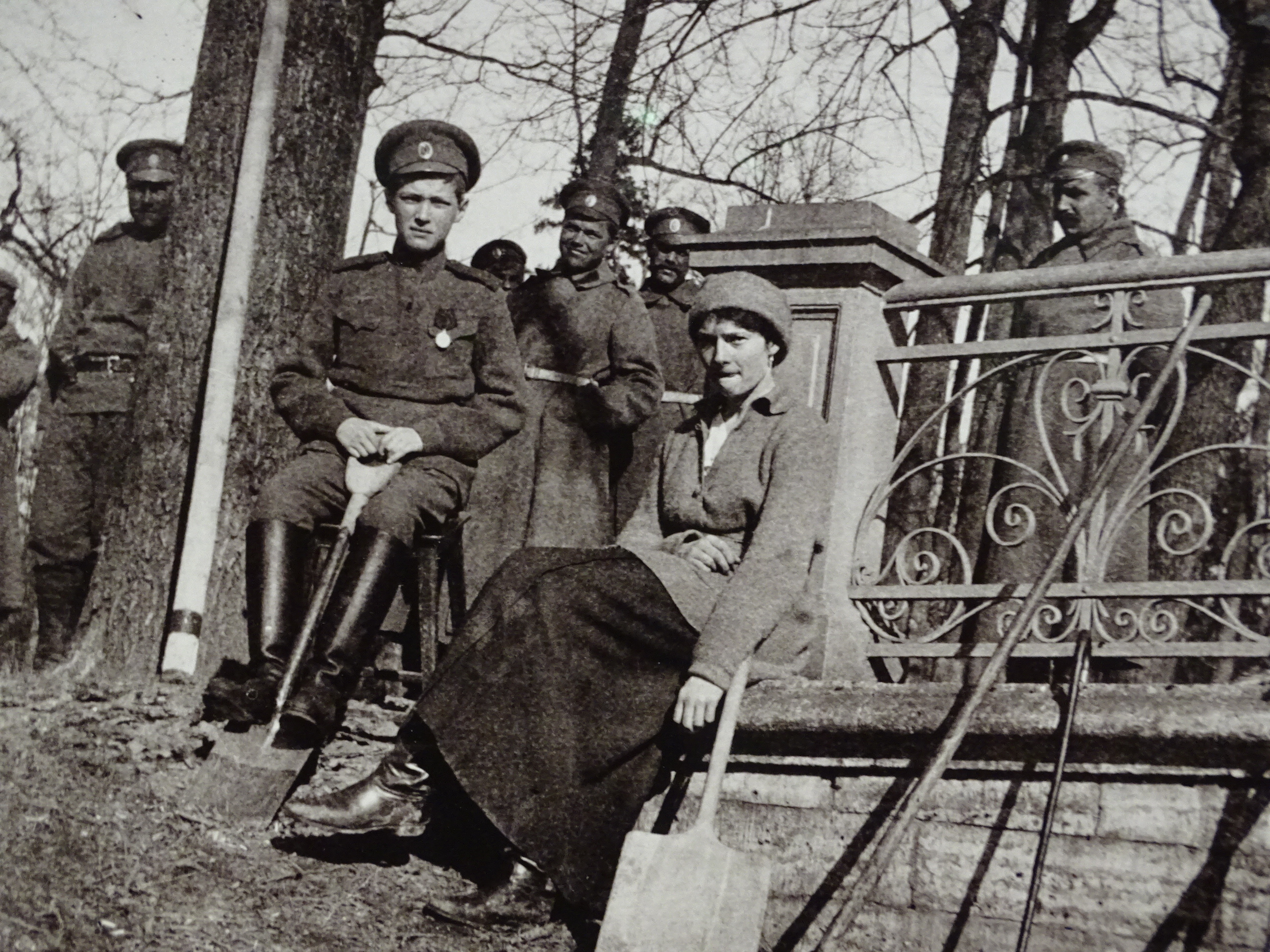|
Madaluzza Contarini Gradenigo
Maddalena "Madaluzza" Contarini Gradenigo (fl. 1779), was a Venetian aristocrat. She was known for the scandals surrounding her notorious love affairs, which brought her in conflict with the Venetian Inquisition and exemplified its opposition to the informal changes in women's positions in 18th-century Republic of Venice. Life Madaluzza Contarini was born a member of the Contarini family, one of the most powerful in the Republic of Venice. She married Carlo Gradenigo, the Venetian governor of Verona. The case of Madaluzza Contarini Gradenigo was one of the more famed of its time, and belonged to the Inquisition's opposition to the new freedom of aristocratic women in 18th-century Venice. Previously, the upper-class women of Venice had by custom lived a secluded life. This changed in the early 18th-century, when the daughters of the doge Domenico Contarini, by their example, ended the use of '' zoccoli'', a type of shoe customarily used by Venetian upper-class women and restricting ... [...More Info...] [...Related Items...] OR: [Wikipedia] [Google] [Baidu] |
Floruit
''Floruit'' (; abbreviated fl. or occasionally flor.; from Latin for "they flourished") denotes a date or period during which a person was known to have been alive or active. In English, the unabbreviated word may also be used as a noun indicating the time when someone flourished. Etymology and use la, flōruit is the third-person singular perfect active indicative of the Latin verb ', ' "to bloom, flower, or flourish", from the noun ', ', "flower". Broadly, the term is employed in reference to the peak of activity for a person or movement. More specifically, it often is used in genealogy and historical writing when a person's birth or death dates are unknown, but some other evidence exists that indicates when they were alive. For example, if there are wills attested by John Jones in 1204, and 1229, and a record of his marriage in 1197, a record concerning him might be written as "John Jones (fl. 1197–1229)". The term is often used in art history when dating the career ... [...More Info...] [...Related Items...] OR: [Wikipedia] [Google] [Baidu] |
Bortolo Gradenigo
Bortolo is a given name. Notable people with the name include: * Bortolo Belotti (1877–1944), Italian politician * Bortolo d'Alvise, 16th-century Italian scientific instrument maker * Bortolo Mutti Bortolo Mutti (born 11 August 1954 in Trescore Balneario, Bergamo) is an Italian football manager and a former player, who was most recently manager of Livorno. His older brother Tiziano Mutti also played football professionally. To distinguish ... (born 1954), Italian footballer and manager {{given name Italian given names Italian masculine given names Masculine given names ... [...More Info...] [...Related Items...] OR: [Wikipedia] [Google] [Baidu] |
18th-century Venetian Women
The 18th century lasted from January 1, 1701 ( MDCCI) to December 31, 1800 ( MDCCC). During the 18th century, elements of Enlightenment thinking culminated in the American, French, and Haitian Revolutions. During the century, slave trading and human trafficking expanded across the shores of the Atlantic, while declining in Russia, China, and Korea. Revolutions began to challenge the legitimacy of monarchical and aristocratic power structures, including the structures and beliefs that supported slavery. The Industrial Revolution began during mid-century, leading to radical changes in human society and the environment. Western historians have occasionally defined the 18th century otherwise for the purposes of their work. For example, the "short" 18th century may be defined as 1715–1789, denoting the period of time between the death of Louis XIV of France and the start of the French Revolution, with an emphasis on directly interconnected events. To historians who expand ... [...More Info...] [...Related Items...] OR: [Wikipedia] [Google] [Baidu] |
Caterina Sagredo Barbarigo
Caterina Sagredo Barbarigo (14 July 1715 – 11 February 1772), was a Venice, Venetian aristocrat, a casino holder and somewhat notorious Salon (gathering), salonniére. Biography She was the daughter of Gerardo Sagredo of the aristocratic Sagredo family. She married twice: Antonio Pisaro in 1732, and Gregorio Barbarigo of the aristocratic Barbarigo family in 1739. Her only daughter was Contarina Barbarigo. Caterina Sagredo Barbarigo was famous for her beauty and intellectual pursuits, was described as a skillful rider and became known for her travels. She hosted a literary salon counted among the most notable in contemporary Venice, and supported the inoculator Domeniceti. The Casino case Caterina Sagredo Barbarigo is also known for her conflict with the Venetian Inquisition. She operated a popular casino at the Giudecca. Venice become famous for its casinos at this point. The clergy and the Inquisition found these businesses scandalous, because at the casinos, both men and wo ... [...More Info...] [...Related Items...] OR: [Wikipedia] [Google] [Baidu] |
Este, Veneto
Este () is a town and ''comune'' of the Province of Padua, in the Veneto region of northern Italy. It is situated at the foot of the Euganean Hills. The town is a centre for farming, crafts and industry worthy of note. History Este had given its name to the Este culture, a proto-historic culture existing from the late Italian Bronze Age (10th/9th century BC, proto-venetic phase) to the Roman period (1st century BC) and which was located in the present territory of Veneto. During the Iron Age Este was a major center of the Veneti who left a number of inscriptions on funerary and votive objects. During the late 3rd century BC, Este peacefully fell under the sway of Rome and became a Roman colony under the name of Ateste. When much of Northern Italy was granted Roman citizenship in 49 BC, the citizens of Este were inscribed into the Roman tribe of ''Romilia''. Following the Battle of Actium, Emperor Augustus settled soldiers of the Legio V Alaudae and Legio XI Claudia in the ... [...More Info...] [...Related Items...] OR: [Wikipedia] [Google] [Baidu] |
House Arrest
In justice and law, house arrest (also called home confinement, home detention, or, in modern times, electronic monitoring) is a measure by which a person is confined by the authorities to their residence. Travel is usually restricted, if allowed at all. House arrest is an alternative to being in a prison while awaiting trial or after sentencing. While house arrest can be applied to criminal cases when prison does not seem an appropriate measure, the term is often applied to the use of house confinement as a measure of repression by authoritarian governments against political dissidents. In these cases, the person under house arrest often does not have access to any means of communication with people outside of the home; if electronic communication is allowed, conversations may be monitored. History Judges have imposed sentences of home confinement, as an alternative to prison, as far back as the 17th century. Galileo was confined to his home following his infamous trial ... [...More Info...] [...Related Items...] OR: [Wikipedia] [Google] [Baidu] |
Vienna
en, Viennese , iso_code = AT-9 , registration_plate = W , postal_code_type = Postal code , postal_code = , timezone = CET , utc_offset = +1 , timezone_DST = CEST , utc_offset_DST = +2 , blank_name = Vehicle registration , blank_info = W , blank1_name = GDP , blank1_info = € 96.5 billion (2020) , blank2_name = GDP per capita , blank2_info = € 50,400 (2020) , blank_name_sec1 = HDI (2019) , blank_info_sec1 = 0.947 · 1st of 9 , blank3_name = Seats in the Federal Council , blank3_info = , blank_name_sec2 = GeoTLD , blank_info_sec2 = .wien , website = , footnotes = , image_blank_emblem = Wien logo.svg , blank_emblem_size = Vienna ( ; german: Wien ; ba ... [...More Info...] [...Related Items...] OR: [Wikipedia] [Google] [Baidu] |
Paris
Paris () is the capital and most populous city of France, with an estimated population of 2,165,423 residents in 2019 in an area of more than 105 km² (41 sq mi), making it the 30th most densely populated city in the world in 2020. Since the 17th century, Paris has been one of the world's major centres of finance, diplomacy, commerce, fashion, gastronomy, and science. For its leading role in the arts and sciences, as well as its very early system of street lighting, in the 19th century it became known as "the City of Light". Like London, prior to the Second World War, it was also sometimes called the capital of the world. The City of Paris is the centre of the Île-de-France region, or Paris Region, with an estimated population of 12,262,544 in 2019, or about 19% of the population of France, making the region France's primate city. The Paris Region had a GDP of €739 billion ($743 billion) in 2019, which is the highest in Europe. According to the Economist Intelli ... [...More Info...] [...Related Items...] OR: [Wikipedia] [Google] [Baidu] |
Udine
Udine ( , ; fur, Udin; la, Utinum) is a city and ''comune'' in north-eastern Italy, in the middle of the Friuli Venezia Giulia region, between the Adriatic Sea and the Alps (''Alpi Carniche''). Its population was 100,514 in 2012, 176,000 with the urban area. Names and etymology Udine was first attested in medieval Latin records as ''Udene'' in 983 and as ''Utinum'' around the year 1000. The origin of the name ''Udine'' is unclear. It has been tentatively suggested that the name may be of pre-Roman origin, connected with the Indo-European root *''odh-'' 'udder' used in a figurative sense to mean 'hill'. The Slovene name ''Videm'' (with final -''m'') is a hypercorrection of the local Slovene name ''Vidan'' (with final -''n''), based on settlements named ''Videm'' in Slovenia. The Slovene linguist Pavle Merkù characterized the Slovene form ''Videm'' as an "idiotic 19th-century hypercorrection." History Udine is the historical capital of Friuli. The area has been inhabited si ... [...More Info...] [...Related Items...] OR: [Wikipedia] [Google] [Baidu] |
Inquisition
The Inquisition was a group of institutions within the Catholic Church whose aim was to combat heresy, conducting trials of suspected heretics. Studies of the records have found that the overwhelming majority of sentences consisted of penances, but convictions of unrepentant heresy were handed over to the secular courts, which generally resulted in execution or life imprisonment. The Inquisition had its start in the 12th-century Kingdom of France, with the aim of combating religious deviation (e.g. apostasy or heresy), particularly among the Cathars and the Waldensians. The inquisitorial courts from this time until the mid-15th century are together known as the Medieval Inquisition. Other groups investigated during the Medieval Inquisition, which primarily took place in France and Italy, include the Spiritual Franciscans, the Hussites, and the Beguines. Beginning in the 1250s, inquisitors were generally chosen from members of the Dominican Order, replacing the earlier practice ... [...More Info...] [...Related Items...] OR: [Wikipedia] [Google] [Baidu] |
Gorizia
Gorizia (; sl, Gorica , colloquially 'old Gorizia' to distinguish it from Nova Gorica; fur, label= Standard Friulian, Gurize, fur, label= Southeastern Friulian, Guriza; vec, label= Bisiacco, Gorisia; german: Görz ; obsolete English ''Goritz'') is a town and ''comune'' in northeastern Italy, in the autonomous region of Friuli Venezia Giulia. It is located at the foot of the Julian Alps, bordering Slovenia. It was the capital of the former Province of Gorizia and is a local center of tourism, industry, and commerce. Since 1947, a twin town of Nova Gorica has developed on the other side of the modern-day Italy–Slovenia border. The region was subject to territorial dispute between Italy and Yugoslavia after World War II: after the new boundaries were established in 1947 and the old town was left to Italy, Nova Gorica was built on the Yugoslav side. The two towns constitute a conurbation, which also includes the Slovenian municipality of Šempeter-Vrtojba. Since May 2011, the ... [...More Info...] [...Related Items...] OR: [Wikipedia] [Google] [Baidu] |





